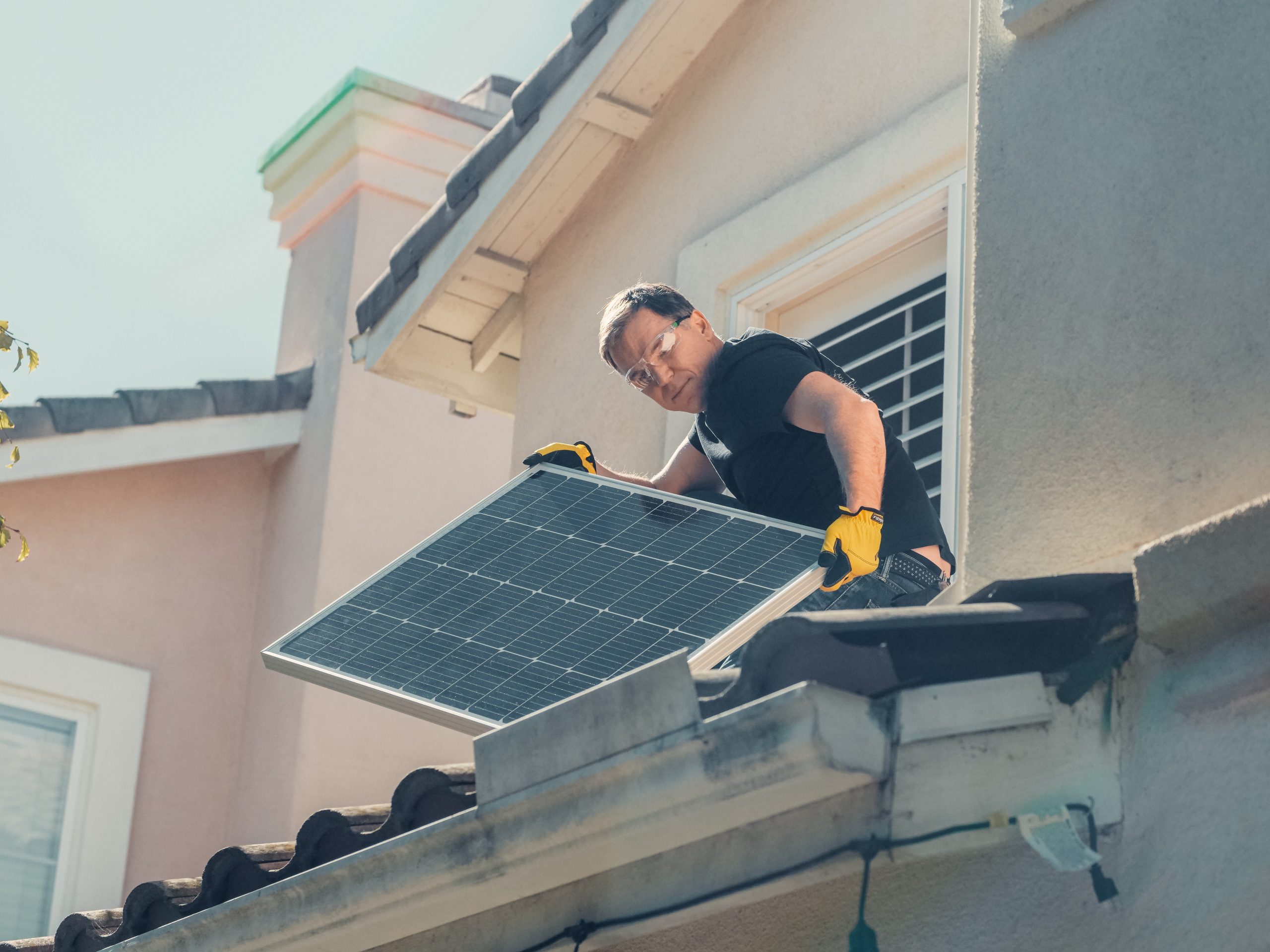Live sustainably and increase your possible mortgage size
It may seem counterintuitive but spending money now so you can live more sustainably, will actually improve your borrowing capacity. The idea being, your future expenses will be less, so the bank will be more comfortable lending you more. Still confused? Here are a few examples.
Lower future expenses = higher mortgage size
1. Going electric

An electric vehicle is a great place to start especially with petrol now topping $3 a litre. Not only will your petrol bill be zero, but the registration cost for electric cars is also a lot lower than petrol and diesel vehicles. On a 12-month rego, you might save up to $200 per annum.
Of course electric cars are a bit more expensive to buy but don’t forget the Government’s “Clean car discount” – if you buy a new or used electric car, you might be eligible for a rebate of up to $8,625 (depending on the type of car you buy).
So doing the numbers, if you normally fill a 60L tank every couple of weeks, having a fully electric car means you’ll save about $200 a fortnight, or roughly $5,000 a year. From the bank’s point of view, this saving means you’ll be able to borrow an extra $40,000 on your mortgage.
2. Getting off the grid
If you have the means, installing solar panels on your roof can really help lower your electricity costs. How much you save will depend on the sorts of panels and batteries you install, but to give you an idea, you’re looking at somewhere between $20,000-$50,000 for an initial setup.
Aside from no longer being at the mercy of energy price inflation, you might even get a little bit of credit coming your way if you produce any excess power.
If your power bill is roughly $400 a month, and you’re able to be fully reliant on the energy your panels generate, you’ll save $4,800 a year. Or in house buying terms, you’ll gain approximately $40,000 of additional borrowing capacity.

Save $4,800 a year
3. Growing your own

With food prices rising, if you’ve got the space (and time), growing your own vegetables and throwing a few fruit trees in the backyard could really make a difference to your weekly budget.
Knocking $50 a week off your food bill, will result in saving $2,600 over the course of a year. That could go towards mortgage repayments, or equate to $20,000 of additional borrowing capacity.
If you can teach your kids the joy of growing their own food, not only are they likely to eat better, but they’ll have this skill for life.
4. Hunting your own?
When it comes to food, we often forget there are more places to get meat than the supermarket. If you know a farming family (or someone who is from a farming family), or if you’re friends with someone who hunts, they might be able to help you fill up your deep freezer.
50kg of meat will cost only a few hundred dollars and you’ll have so much mince in the freezer, Mexican nights can be a twice weekly event.
Getting regular home kill can save you up to two-thirds off your regular meat spend. So if you’re currently spending $100 a week on protein, you’ll save close to $3,500 per year, or gain $30,000 of additional borrowing capacity.
5. Make the most of your space

Do you have a spare room or two in your current house, how about taking on a boarder? Depending on the location and house layout, you can charge a boarder up to $250-$300 per week.
Understandably, this isn’t for everyone, but if you’re uncomfortable taking in a complete stranger, you could always consider accommodating a friend or family member.
$300 per week equates to an extra $15,600 a year, which would result in an additional $120,000-$140,000 of additional borrowing capacity.
Alternatively, if you don’t have a spare room but have space on your section, you could put up a minor dwelling (up to 30m2) and charge someone to live there too.
The banks are on board
Well, three banks are keen to fund you to live more sustainably. ANZ, Westpac and ASB have introduced loan products that incentivise sustainability.
With the offers, you can top up your loan by up to $80,000 on a fixed interest rate from 0% to 1% to help you purchase things likes solar panels and battery upgrades, electric and hybrid vehicles, e-bikes, heat pumps, double glazing, and insulation, or even tank water storage.
We fully appreciate making all these ‘sustainable’ changes at once are not within most people’s means. What we hoped though is to give you a sense of what might be possible. Making small changes if and when you can, will have a big impact over the course of a year (or several years). It might mean you save more or increase your borrowing capacity, but at the very least, you’ll be doing that little bit extra to help your children and grandchildren’s future.
Top up your loan by up to $80,000
Solar panels,
Electric vehicles,
Heat pumps,
Double glazing,
Tank water storage
0% to 1% interest rate
*Note on the numbers
The increased borrowing capacity estimates have been simplified as the banks work off minimum household spending assumptions. However, with the right financial adviser a detailed explanation can go a long way to helping the banks understand your unique situation.
No specific quotes have been obtained for estimated costs and savings. The numbers used were to demonstrate potential savings but are not intended to be relied upon. To get a detailed quote, please contact a specialist.
Like any profession, not all financial advisers are created equal.
If you want a financial adviser who is going to be with you for the whole journey as you navigate the intricacies of both the property and financial worlds, the team at Float is here for you.
Drop us a line on 0800 356 288 or at info@floatmortgages.co.nz




